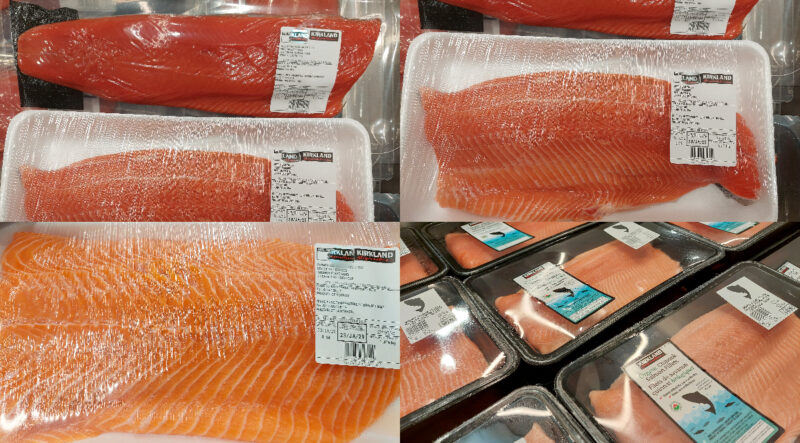Throwing Shade on the Colour of Salmon; The Truth Behind Astaxanthin
Instead of sourcing the Astaxanthin carotenoid from the wild, they opt for a lab produced version that is extracted from algae
Viewpoint By: Samantha McLeod
All salmon are white fleshed in their smolt days, and as they age they develop their pink, orange, and red hues through their diets in the wild, and through their feed on the farms – Wild, salmon eat krill and invertebrates that contain astaxanthin, while the synthetic version is added to the feed pellets of ocean-based farmed raised salmon.
Noted: Wild fish like to feed on other fish, algae, and seaweed. Therefore farmers use feed that closely replicates fish diets in the wild, this is to ensure that farmed and wild seafood have similar nutrient profiles.
What is this Astaxanthin? It is a carotenoid that is present in the microalga Haematococcus pluvialis Flotow and also in shrimp, krill and salmon. Astaxanthin has crimson pigment, which is the colour of the algae that contains it. The colour of salmon fillets is from the same pigment that we see in lobsters and even flamingos.
Noted: In keeping with the “we are what we eat” truth, it makes sense that the salmon species are all of varying degrees of reds – crimson to pale pink – due to the amount of this astaxanthin they consume, and from whence it is sourced.
Astaxanthin is a high-value carotenoid being produced by chemical synthesis and by extraction from the biomass of the microalga Haematococcus pluvialis. It is used as an additive in formulated aquafeeds to promote and enhance the coloration of muscle in salmon and shrimp.
The primary function of astaxanthin is to provide the beneficial reddish-orange colour in caged fish since they do not have access to natural sources of carotenoids.
Therefore, the use of astaxanthin in the aquaculture sector is important for pigmentation and consumer appeal, and well as an important dietary component for sufficient growth and reproduction
Noted: We know that the natural sources of astaxanthin are algae, yeast, salmon, trout, krill, shrimp and crayfish, while the stuff added to fish food is produced from microalga Haematococcus pluvialis (a biomass microalgae).
Is there astaxanthin in fruits and vegetables? Astaxanthin is a carotenoid, a classification for the pigments that give various fruits, vegetables, and plants their colour.
Carotenoids are common in the natural world among different plants and animals. Salmon have it in their diet from eating algae, krill and other small crustaceans. Carotenoids are essential pigments produced by bacteria, fungi, algae and plants.
Noted: Animals cannot make carotenoids on their own, so those found in animals are either partly modified through their own metabolic reactions, or directly accumulated from food from the wild, or from the feed they are fed.
What is the best way to absorb astaxanthin? Studies have shown that absorption of Astaxanthin is enhanced in the presence of fats, surfactants or phospholipids.
The antioxidant properties of this carotenoid are widely known. Its capacity to protect against free radicals is more than 500-fold more effective than that of vitamin E. Like the other elements in its category, astaxanthin contributes to strengthen antioxidant defences and slows down cellular ageing. It can also protect ocular health, particularly the retina and the macula, by helping to maintain correct visual capacity.
Noted: We are what they eat, hence the “eat more fish” and “eat your carrots” mantras we hear from all parents and from the health food industry.
Bottomline is we are told to eat our fish and vegetables because they are good for us. We know that Astaxanthin is a carotenoid and it is found in fish and vegetables. We know wild seafood get it from their free ranging lifestyle. And we know that farmed seafood gets a lesser amount, of sustainably sourced astaxanthin, added to their feed.
Through innovation and technology with sustainability as the main focus, salmon are fed dry pellets which contain around 70 percent vegetable ingredients and 30 percent marine raw materials like fishmeal and fish oil. Plus, instead of sourcing the Astaxanthin carotenoid from the wild, they opt for a lab produced version that is extracted from algae.
Here is my takeaway…a long time ago fish farmers were criticised for using wild fish to feed ocean-based farm raised fish. The farmers heeded the criticism and invested in perfecting a sustainable feed. Today, because of a healthy and sustainable feed, insults are still being thrown on farmers.
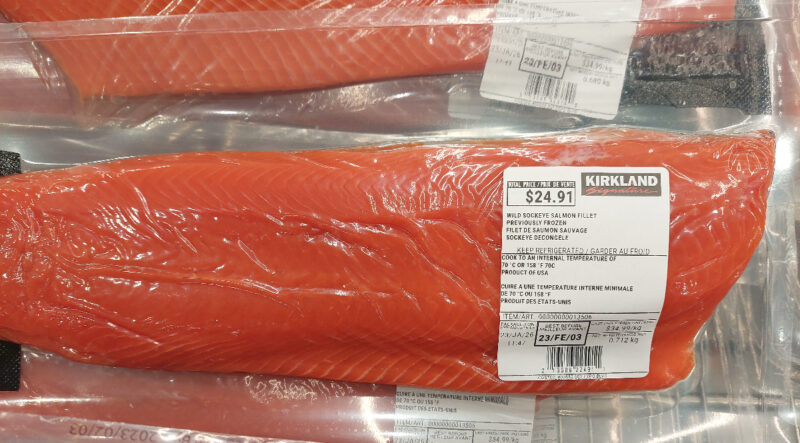
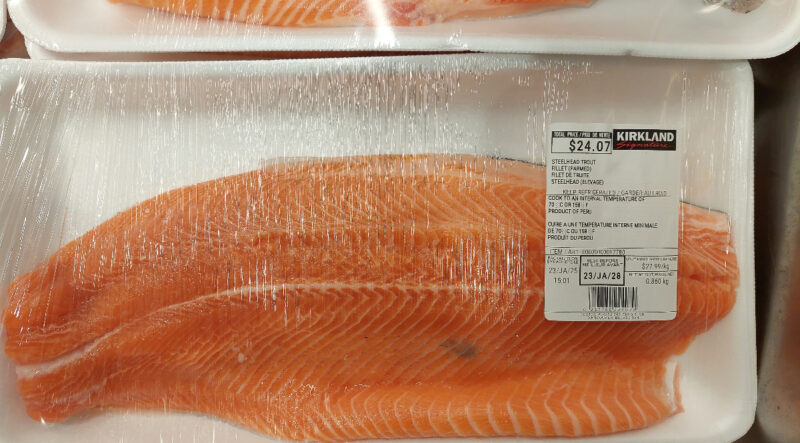
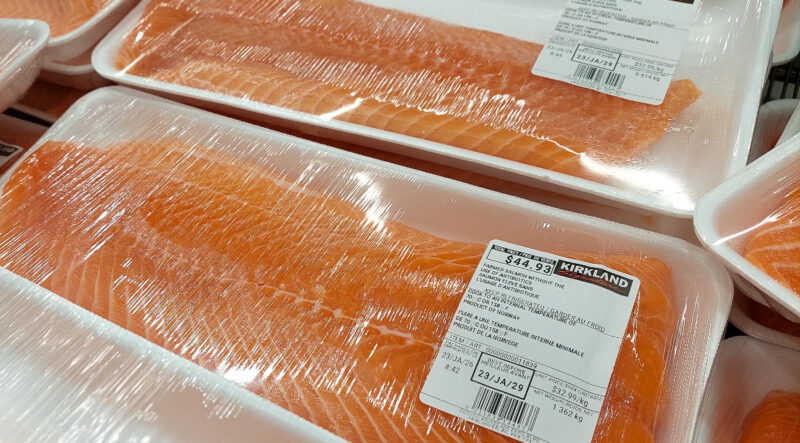
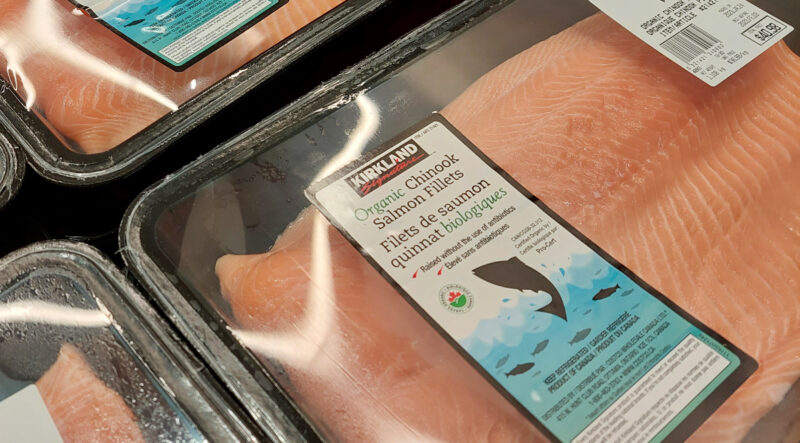
Images: The shades of salmon, all in the same cooler.
Too often salmon images are blatantly edited and manipulated to reflect the story that the storyteller wants to push. Whether it is to gain more clicks or to rile up the converted, they are using subterfuge to get the tale across (no pun intended).
These images were taken on a recent visit to Costco in Vancouver, BC. The display of colours are exactly “AS IS”. They are NOT manipulated.

